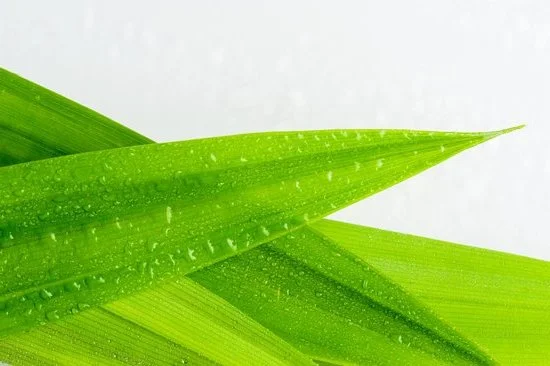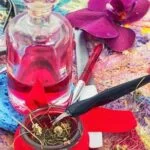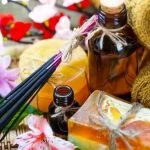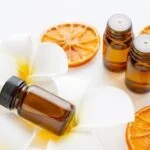Welcome to the world of aromatherapy sprays, where the power of scents meets the convenience of a spray bottle. Aromatherapy sprays are a popular and effective way to enhance mood, promote relaxation, and boost overall well-being.
By harnessing the therapeutic properties of essential oils, these sprays offer a natural and aromatic solution to everyday stresses and ailments. Whether you want to unwind after a long day, create a calming atmosphere in your home, or find relief from headaches or anxiety, making your own aromatherapy spray allows you to customize your experience and enjoy the benefits of this ancient practice.
Aromatherapy sprays work by dispersing tiny molecules of essential oils into the air, where they can be inhaled or come into contact with our skin. This interaction between scent molecules and our body’s receptors triggers various physiological responses that can have a profound impact on our mood, emotions, and overall well-being. Lavender is known for its relaxing properties, perfect for unwinding before bedtime or creating a calm environment at home.
Peppermint can provide mental clarity and focus, making it ideal for use during work or study sessions. The possibilities are endless when it comes to blending different oils and creating your desired effects.
To make your own aromatherapy spray, you will need some essential oils, a spray bottle (preferably glass), distilled water, and optionally carrier oils such as jojoba oil or almond oil. Although it may seem daunting at first, creating these blends is quite simple with the right guidance.
In this article, we will take you through each step of the process – from choosing the right essential oils based on their therapeutic properties to mixing the spray solution and incorporating carrier oils if desired. We will also provide tips on proper storage techniques and answer common questions beginners may have.
Embrace the power of aromatherapy sprays as we guide you through this journey towards enhanced well-being and self-care. These natural remedies offer a safe and enjoyable way to uplift your spirits, relax your mind, and take control of your own holistic health regimen. So let’s dive in and discover the world of aromatherapy sprays together.
Choosing the Right Essential Oils for Your Aromatherapy Spray
When it comes to making your own aromatherapy spray, selecting the right essential oils is crucial. Each oil has its own unique therapeutic properties that can enhance mood, promote relaxation, and boost overall well-being. By understanding these properties and choosing oils based on your desired effects, you can create a personalized aromatherapy spray that suits your needs.
There are numerous essential oils available, each with its own distinct scent and benefits. Here are some commonly used essential oils and their therapeutic properties:
- Lavender: Known for its calming and soothing effects, lavender oil is often used to promote relaxation and reduce stress.
- Peppermint: This refreshing oil is known for its energizing and invigorating qualities, making it ideal for promoting mental clarity and focus.
- Eucalyptus: With its cooling sensation and respiratory benefits, eucalyptus oil is commonly used to alleviate congestion and promote easier breathing.
- Lemon: The bright scent of lemon oil is often used to uplift mood, increase energy levels, and provide a fresh aroma.
- Rosemary: Known for its stimulating properties, rosemary oil can help improve mental alertness and memory retention.
When selecting essential oils for your aromatherapy spray, it’s important to consider their individual scent profiles as well as their therapeutic effects. You may also choose to mix different oils together to create a harmonious blend that offers multiple benefits.
To help you choose the right essential oils for your aromatherapy spray, here are some tips:
- Determine the purpose of your spray: Identify the specific effect you want to achieve with your aromatherapy spray. Is it relaxation? Energizing? Pain relief? Once you have a clear goal in mind, you can select oils that align with that purpose.
- Research the therapeutic properties of different oils: Familiarize yourself with the various therapeutic properties of essential oils. Look for oils that have the desired effect you’re seeking. For example, if you want to create a calming spray, look for oils known for their calming and soothing effects.
- Experiment with different combinations: Don’t be afraid to mix and match different essential oils to create your own unique blend. Some oils work well together and can enhance each other’s therapeutic properties. Be sure to test the scent and effect of your blend before creating a larger batch.
By following these tips, you can choose the right essential oils that not only smell delightful but also provide the desired benefits in your aromatherapy spray.
| Essential Oil | Therapeutic Properties |
|---|---|
| Lavender | Calming, soothing, stress reduction |
| Peppermint | Energizing, invigorating, mental clarity |
| Eucalyptus | Cooling sensation, respiratory benefits |
| Lemon | Mood uplifting, energy boosting, fresh aroma |
| Rosemary | Stimulating, mental alertness, memory retention |
Gathering the Necessary Supplies
When it comes to making your own aromatherapy spray, gathering the necessary supplies is crucial. Having the right materials will ensure that you can create a high-quality and effective spray that meets your specific needs. Here’s a list of supplies you’ll need to get started:
- Glass Spray Bottle: It’s essential to use a glass bottle for your aromatherapy spray as essential oils can degrade plastic over time. Look for a dark-colored glass bottle, such as amber or cobalt blue, to protect the oils from light exposure.
- Essential Oils: Choose essential oils based on their therapeutic properties and the desired effects you want to achieve with your spray. For example, lavender oil is known for its calming and relaxing properties, while peppermint oil can provide mental clarity and focus.
- Distilled Water: Distilled water is recommended for making aromatherapy sprays as it doesn’t contain any impurities or minerals that may affect the quality of the spray. You can find distilled water at most grocery stores or easily make it at home using a distiller or by boiling water and collecting the condensation.
- Optional Carrier Oil: If desired, you can add a carrier oil to your aromatherapy spray. Carrier oils help dilute essential oils and also provide additional benefits for the skin. Popular carrier oils include jojoba oil, almond oil, and fractionated coconut oil.
When it comes to purchasing supplies for your aromatherapy spray, it’s important to choose high-quality ingredients from reputable brands. Look for essential oils that are 100% pure and therapeutic grade to ensure they are free from additives or synthetic chemicals. Similarly, opt for a glass spray bottle made from durable materials like thick glass with UV protection.
You can find these supplies at various places including health food stores, online retailers specializing in aromatherapy products, or directly from reputable essential oil companies. It’s always helpful to read reviews and ask for recommendations to ensure you’re purchasing from a trustworthy source. With the right supplies in hand, you’ll be well-prepared to create your own customized aromatherapy spray.
Creating a Harmonious Aromatherapy Blend
Creating a harmonious aromatherapy blend is a crucial step in making an effective and enjoyable aromatherapy spray. The combination of essential oils will determine the scent, therapeutic properties, and overall effects of the spray. Here is a step-by-step guide on how to create your own harmonious blend:
- Identify your purpose: Before selecting essential oils for your blend, consider the specific purpose or desired effect you want to achieve with your spray. For example, if you want a blend that promotes sleep, you may choose lavender and chamomile oils known for their calming properties.
- Research the therapeutic properties: Each essential oil has its own unique set of therapeutic properties. Take the time to research and understand the properties of different oils to ensure they align with your intended purpose. For example, if you are looking to relieve stress, oils such as bergamot or ylang-ylang may be suitable choices.
- Choose complementary oils: Once you have identified the therapeutic properties you desire, select essential oils that complement each other well. Avoid choosing oils with conflicting scents or effects as this can result in an unpleasant or ineffective blend.
- Determine the proportions: Depending on the strength and potency of each oil, it’s important to use different proportions when blending them together. Generally, start with 10-15 drops of essential oil per ounce of water as a guideline. However, feel free to adjust this ratio based on personal preference and desired potency.
- Test and adjust: After combining the essential oils in the chosen proportions, it’s important to test the blend before adding it to your spray bottle. Place a few drops on a tissue or cotton pad and inhale deeply to check if the scent and effects match your expectations. If needed, make adjustments by adding more drops of certain oils until you achieve the desired balance.
Once your harmonious aromatherapy blend is created and tested successfully, proceed to the next step of mixing the spray solution. Remember to keep a record of your blend recipe so that you can recreate it in the future or make adjustments based on personal preference. Harness the power of essential oils and create customized aromatherapy sprays tailored to your needs.
| Essential Oil | Therapeutic Properties | Suggested Effects |
|---|---|---|
| Lavender | Calming, Relaxing, Soothing | Sleep aid, Anxiety relief |
| Peppermint | Mental clarity, Energizing, Cooling | Focused concentration, Refreshing sensation |
| Bergamot | Mood uplifting, Stress relieving | Anxiety relief, Emotional balance |
Mixing the Aromatherapy Spray
Instructions for Mixing the Aromatherapy Spray
Once you have gathered all the necessary supplies, it’s time to mix your own aromatherapy spray. Follow these step-by-step instructions to create a personalized blend that suits your needs and preferences.
- Determine the Purpose: Consider what you want to achieve with your aromatherapy spray. Whether you’re looking for a sleep aid, stress relief, or an energy boost, choose essential oils that align with your desired effects.
- Choose Your Essential Oils: Refer to the earlier section on Choosing the Right Essential Oils for Your Aromatherapy Spray and select the oils that correspond to your chosen purpose. Remember to consider their therapeutic properties and aroma profiles as well.
- Determine Proportions: Each essential oil has different intensity levels, so it’s important to determine the appropriate proportions for your blend. As a general guideline, start with 10-12 drops of essential oil per ounce of water. You can adjust this ratio based on personal preference and strength of aroma desired.
- Measure and Combine: Using a glass measuring dropper or pipette, carefully measure out the specified number of drops for each essential oil into the glass spray bottle. Be precise in order to maintain the intended balance between scents.
- Add Distilled Water: Fill the glass spray bottle with distilled water until it reaches near the top (leaving some room for shaking). Distilled water is recommended as tap water may contain impurities that could affect the quality of your spray.
- Shake Well: Tightly screw on the cap or nozzle of your spray bottle and give it a good shake for about 30 seconds to ensure proper blending of oils and water.
Adding Carrier Oils (Optional)
If you prefer a more moisturizing or nourishing aromatherapy spray, you can incorporate a small amount of carrier oil into your mixture. Here’s how:
- Choose a Carrier Oil: Common carrier oils include jojoba oil, almond oil, and fractionated coconut oil. These oils are lighter in texture and can help disperse the essential oils more evenly on the skin.
- Determine Proportions: As carrier oils have stronger aromas compared to distilled water, it’s recommended to use them sparingly. Start with just a few drops (2-3 drops per ounce of water) and adjust according to your preference.
- Mix Well: After adding the essential oils and distilled water, gently swirl the mixture to incorporate the carrier oil until everything is well blended.
Now that you’ve mixed your aromatherapy spray, you’re ready to experience its benefits. In the next section, we will explore how to store and preserve your spray to maintain its potency and aroma over time.
Adding Carrier Oils (Optional)
Explanation of Carrier Oils and Their Benefits
Carrier oils are often used in aromatherapy sprays to dilute the essential oils and provide added benefits to the user. These oils are derived from nuts, seeds, or plants, and they have their own unique properties that can enhance the effectiveness of the spray. Some popular carrier oils include jojoba oil, almond oil, coconut oil, and grapeseed oil.
One of the main benefits of using a carrier oil is that it helps to moisturize and nourish the skin. Essential oils can be quite strong and may cause irritation if applied directly to the skin, so carrier oils help to create a milder solution that is safe for topical use. Carrier oils also aid in absorption, allowing the therapeutic properties of the essential oils to penetrate deeper into the skin.
In addition to their moisturizing properties, carrier oils offer their own specific benefits. For example, jojoba oil is known for its ability to regulate sebum production in oily skin types, while almond oil is rich in vitamin E and can help soothe dry or irritated skin. Coconut oil has antimicrobial properties which can be beneficial for acne-prone skin, and grapeseed oil is lightweight and non-greasy, making it an ideal choice for facial sprays.
Instructions for Incorporating Carrier Oils into the Spray Mixture
If you decide to add a carrier oil to your aromatherapy spray, it’s important to choose one that complements your selected essential oils. Start by adding just a few drops of your chosen carrier oil into your glass spray bottle before adding any other ingredients. The number of drops will vary depending on how strong you want the scent of your spray to be.
After adding the carrier oil, proceed with adding your desired essential oils according to the recommended proportions from the previous section. Once all of these ingredients are combined, you can follow the instructions for mixing the aromatherapy spray solution using distilled water.
Remember to shake your spray bottle well before each use to ensure that the carrier oil is evenly distributed throughout the mixture. This will help to prevent separation or clogging in the spray nozzle. If you notice any changes in scent or texture, it may be a sign that your carrier oil has gone bad and it’s time to replace it.
Adding a carrier oil is optional in aromatherapy sprays, but it can provide additional benefits and enhance your overall experience. Experiment with different carrier oils to find the ones that work best for your skin type and desired effects.
Storing and Preserving Your Aromatherapy Spray
Once you have created your own aromatherapy spray, it’s important to store and preserve it properly to maintain its potency and aroma. Proper storage can help prolong the shelf life of your spray, ensuring that it remains effective for longer periods of time. Here are some recommendations on how to store your aromatherapy spray:
- Choose the right container: It’s essential to use a glass spray bottle to store your aromatherapy spray. Glass is non-reactive and will not interact with the essential oils, preserving their therapeutic properties. Avoid using plastic bottles as they may react with the oils and affect their quality.
- Keep it in a cool, dark place: Essential oils are sensitive to heat, light, and air exposure, which can cause them to degrade or oxidize over time. To prevent this, store your aromatherapy spray in a cool, dark place away from direct sunlight and high temperatures.
- Use amber or cobalt blue glass bottles: If possible, opt for amber or cobalt blue glass bottles instead of clear ones. These darker-colored bottles provide additional protection against light exposure, helping to preserve the integrity of the essential oils.
- Tighten caps securely: Ensure that the caps of your spray bottles are tightened securely after each use. This prevents air from entering the bottle and helps maintain the freshness of the blend.
- Avoid contact with water: Water can introduce bacteria into your sprays and reduce their shelf life. Make sure that no water enters the bottle during use or storage.
It’s also important to note that while essential oils have long shelf lives on their own, when diluted with water or carrier oils in a spray mixture, their lifespan may be shortened. Most homemade aromatherapy sprays can last for several months if stored properly; however, they may lose some of their potency over time.
To determine if your aromatherapy spray has expired, pay attention to any changes in scent, color, or consistency. If the spray smells rancid or off, has changed color dramatically, or has developed mold or sediment, it is best to discard it and create a new batch.
By following proper storage practices, you can ensure your aromatherapy spray remains fresh and effective for as long as possible. With the right care, you can continue to enjoy the benefits of your homemade blend whenever you need a mood boost or relaxation session.
Using Your Aromatherapy Spray
Once you have created your aromatherapy spray, it’s time to start incorporating it into your daily routine. Here are some suggestions on when and where to utilize the spray for desired effects:
- Home: Use your aromatherapy spray in any room of your home to create a pleasant and inviting atmosphere. You can spritz it in the air or on linens, curtains, or furniture to infuse the space with a delightful fragrance.
- Office: Bring a small bottle of your aromatherapy spray to work and use it at your desk to enhance focus and productivity. Certain scents like peppermint or rosemary can help improve mental clarity and concentration, while lavender or chamomile can promote relaxation during stressful moments.
- Before Bedtime: Incorporate your aromatherapy spray into your bedtime routine to help relax and prepare for a good night’s sleep. Spray it on your pillow or lightly mist it around the room before you go to bed. Lavender, bergamot, and ylang-ylang are excellent choices for creating a calming ambiance that promotes restfulness.
Safety precautions should always be considered when using aromatherapy sprays:
- Avoid spraying directly onto the face or eyes.
- If you have sensitive skin or allergies, perform a patch test by applying a small amount of the spray on a small area of skin first.
- Keep out of reach from children and pets.
- Consult with a healthcare professional if you are pregnant, nursing, or have any specific health concerns before using an aromatherapy spray.
To maximize the effectiveness of your aroma therapy spray, keep these tips in mind:
- Shake well before each use: Since essential oils may separate from water over time, give the bottle a gentle shake to ensure proper blending of oils and water.
- Store properly: Keep your aromatherapy spray in a cool, dry place away from direct sunlight and heat. This will help preserve the potency and aroma of the spray for a longer duration.
By incorporating aromatherapy sprays into your daily routine, you can enjoy the benefits they provide while embracing natural remedies. Experiment with different essential oil blends and find the scents that resonate with you to enhance your overall well-being. Remember to always follow safety guidelines and use reputable brands for quality ingredients. With a little creativity and exploration, you’ll soon discover the power of aromatherapy sprays in promoting relaxation, improving mood, and elevating your everyday experience.
Frequently Asked Questions about Aromatherapy Sprays
As you embark on your journey into the world of aromatherapy sprays, you may have some questions about their usage and benefits. Here are some frequently asked questions that will help guide you:
- Can aromatherapy sprays be used by everyone?
- How often should I use aromatherapy sprays?
- Can I customize my own blend of essential oils?
Aromatherapy sprays can generally be used by most individuals, but it is important to take certain precautions. Pregnant women, people with certain medical conditions, and individuals with allergies should consult a healthcare professional before using any essential oils. It is also recommended to patch test a small area of skin before applying the spray on larger areas of the body.
The frequency of use depends on personal preference and the desired effects. Some individuals may enjoy using the spray multiple times throughout the day, while others may prefer to use it only in specific situations or settings. It is best to start with a small amount and gradually increase or decrease as needed.
Yes. One of the great things about aromatherapy sprays is that they can be customized to suit individual preferences and needs. Experimenting with different combinations of essential oils allows you to create unique blends that cater to your specific goals, whether it’s relaxation, mood enhancement, or focus.
These FAQs address some common concerns and queries related to aromatherapy sprays, but there is always more to discover and learn along your aromatherapy journey. Don’t hesitate to seek out additional information or consult a professional if needed. With proper knowledge and guidance, you can fully embrace the power of aromatherapy sprays and incorporate these natural remedies into your daily routine.
Conclusion
In conclusion, aromatherapy sprays are a wonderful addition to any self-care routine. With their ability to enhance mood, promote relaxation, and boost overall well-being, these natural remedies have the power to transform your daily life. By choosing the right essential oils and creating harmonious blends, you can customize your spray to meet your specific needs and desired effects.
Remember to gather all the necessary supplies and invest in quality ingredients for the best results. Whether you prefer a sleep aid blend or a stress-relief concoction, following the step-by-step guide provided will ensure that you create a potent and effective aromatherapy spray.
Once you have made your spray, it’s important to properly store and preserve it to maintain its potency and aroma. Pay attention to shelf life recommendations and be aware of any signs of expiration. By taking these precautions, you can continue enjoying the benefits of your spray for an extended period.
Now that you have learned how to make and use aromatherapy sprays, it’s time to embrace their power. Incorporate them into your daily routine at home, at the office, or before bedtime for maximum effectiveness. Don’t hesitate to experiment with different blends or seek additional information if needed. The world of aromatherapy is vast, and there is always more to explore.
So go ahead and embrace the power of aromatherapy sprays. Enhance your well-being, uplift your mood, and create moments of tranquility in your life through this beautiful practice. Your journey into the world of aromatherapy awaits.
Frequently Asked Questions
What do you mix essential oils with to make spray?
Essential oils can be mixed with various ingredients to make a spray. One common method is to dilute the essential oil in a carrier oil, such as fractionated coconut oil or jojoba oil. This helps to safely disperse the essential oil throughout the spray and prevent it from irritating the skin.
Additionally, mixing the essential oil with alcohol, such as vodka or witch hazel, can help to preserve the spray and provide a longer shelf life. Finally, adding distilled water or hydrosols can help create a base for the spray and add a subtle scent if desired.
How do you make aromatherapy body spray?
Making aromatherapy body spray is relatively simple and customizable based on personal preference. Begin by selecting your desired essential oils that offer aromatherapeutic benefits like relaxation or rejuvenation. Dilute these oils in a suitable carrier liquid such as witch hazel or vodka, ensuring you follow appropriate dilution ratios recommended for safe use on the skin.
The chosen carrier liquid helps to disperse and preserve the essential oil blend effectively while preventing any potential irritation on the body. Finally, fill a spray bottle with this mixture, shake well before each use, and enjoy misting it onto your body whenever desired for an aromatic experience.
How do you make a calming spray with essential oils?
Creating a calming spray with essential oils can be an excellent way to promote relaxation and tranquility in daily life. To make one, begin by selecting calming essential oils known for their soothing properties like lavender, chamomile, or bergamot. These oils are renowned for their ability to reduce stress and anxiety while promoting calmness of mind and body.
Dilute these essential oils in distilled water along with an emulsifier such as polysorbate 20 or vegetable glycerin; it helps mix the water-based solution with oil-based essential oils efficiently for better dispersion within the spray bottle without separation occurring over time. Once blended thoroughly, pour into a spray bottle and give it a gentle shake before each use. This calming spray can be misted onto pillows, linens, or in the air to create a serene atmosphere and induce feelings of calmness.

Are you looking for a natural way to improve your health and wellbeing?
If so, aromatherapy may be the answer for you.





